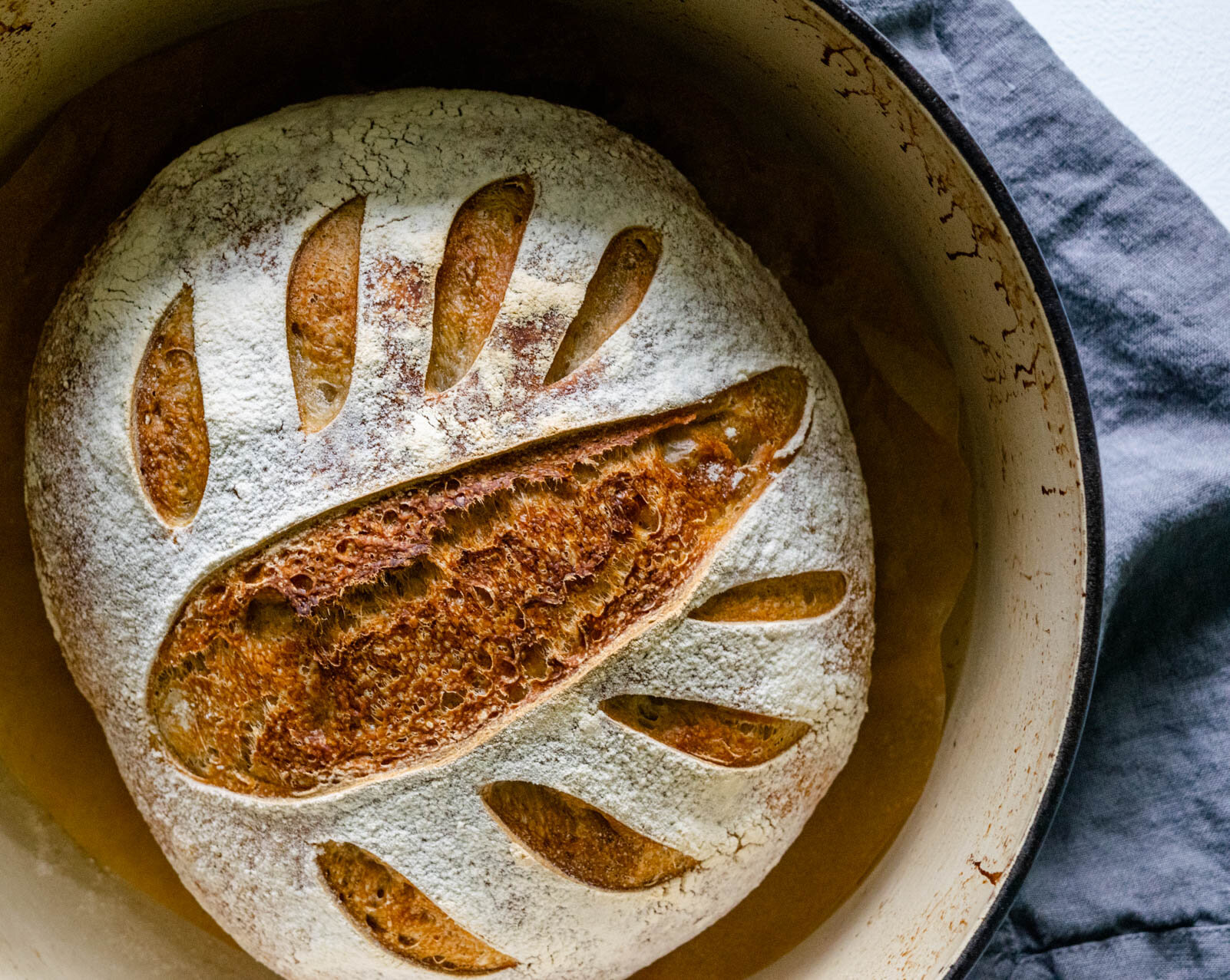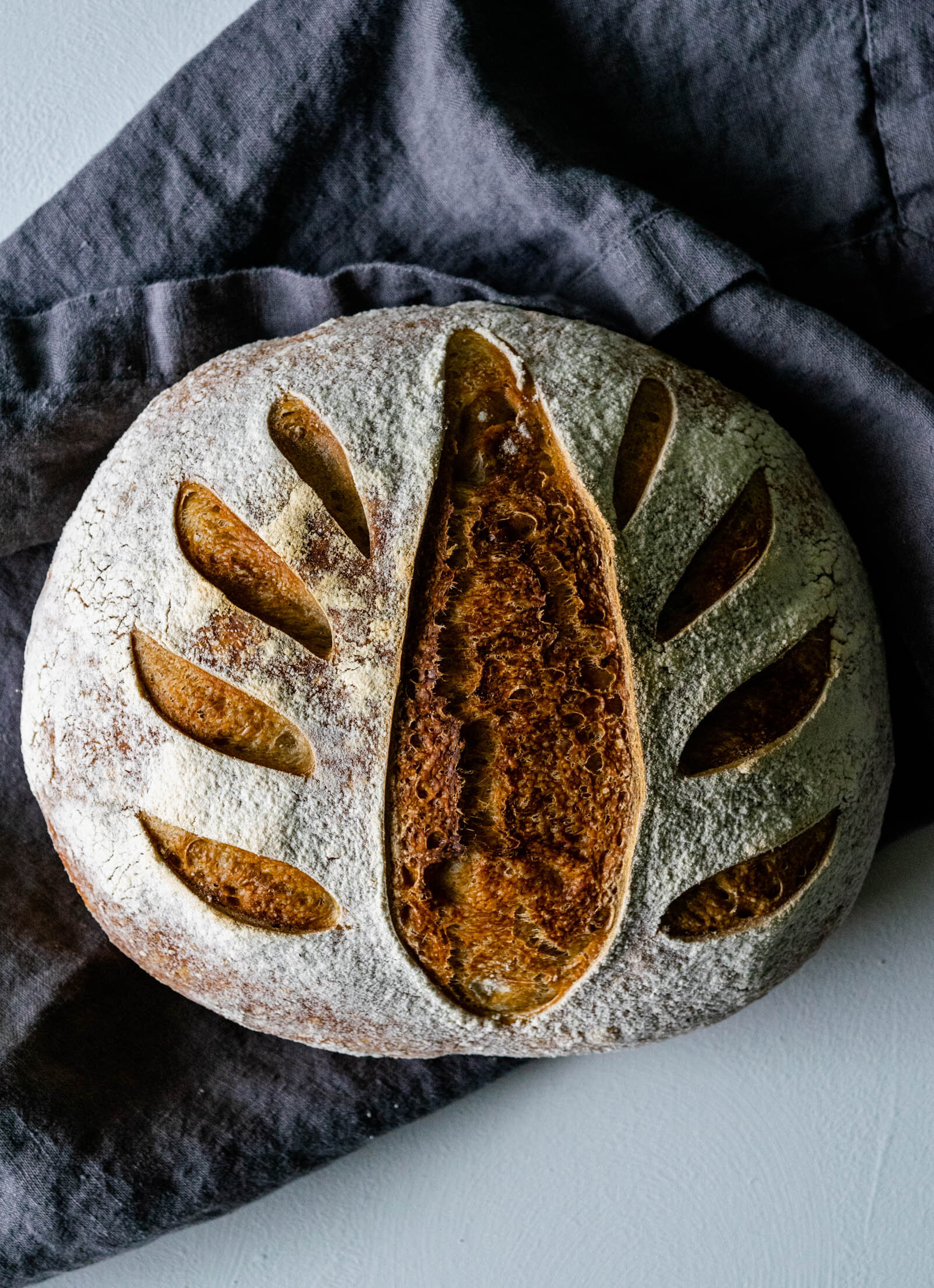Classic Croissants
/As you grow up, it’s interesting to discover where your characteristics come from. There are some parts of my personality that I can pinpoint to either my mom or dad, and some that are solely mine, but a large amount of my personality traits run to my Aunt Karen. (Fun fact: both my mom and dad have sisters named Karen, so we’ve always just used the terms “mommy’s aunt Karen” or “daddy’s aunt Karen” to distinguish between the two.) Daddy’s Aunt Karen and I not only share a birthday, but we also share a passion for serving for populations on the outskirts of society, a love for really good food, and a knack for great wine. Two years ago, for our joint birthday celebration, my aunt and I spent 10 days in Aix-en-Provence, a small city in Southern France, where I continued to fall more deeply in love with laminated doughs.
I could spend hours and hours reminiscing about the cobblestone streets and remembering the smells and sounds of the daily market, but today I am trying to stay focused on pastries. Croissants specifically. Croissants have always been my favorite pastry, partly because of their flavor, but mostly because of their craftsmanship. Layers and layers of butter are expertly folded into the dough, creating thousands of sheets, swirling through the inside and giving way to a flaky exterior, that shatters under the weight of any pressure. They are a beautiful work of art. Each morning during our time in Aix, someone in our group would rise earlier than the rest of the house, head down to a boulangerie just as the sun was coming up and bring back assorted breads and pastries for breakfast. (And is this not the perfect morning??) Every morning, no matter who went on the breakfast bread run, there was a pain-au-chocolat tucked in amongst the buns, specifically for me.
For me, as a someone who really loves to be successful at everything the very first time I do it, croissants are a reminder to slow down. Like any good artist, practice and repetition are key to creating a masterpiece and croissant making is no exception. As I continue to practice, my hands will learn the motions and the feel of the dough, my layers will get flakier and my crumb more even. Until then, making croissants at home brings me back to a little town in the South of France and reminds to slow down and enjoy each and every part of the journey.
*Some Notes: 1) Because they use bread flour, which has a higher protein level, these croissants are a little more bread-like than others. They are still light and flaky, but they are also able to hold up if you want to split them open and use them to make breakfast sandwiches throughout the week. 2) I put the measurements are in both grams/ounces and cups for ease of use, but I highly recommend you use grams/ounces when making any sort of bread. You can get a cheap-o kitchen scale on amazon and it will quickly become your best friend.
Classic Croissants
Yield: 12 large croissants
Ingredients:
for the dough (detrempe):
5 1/4 cups (690g) bread flour
1 1/4 cup (310g) whole milk
2 eggs
1/3 cup (81g) sugar
2 tsp (13g) salt
2 1/2 tsp (9g) instant yeast
1 tbsp (19g) unsalted butter
for the butter block:
3 sticks (330g) unsalted butter, room temp
1 tbsp (9g) flour
Procedure:
To make the butter block:
In a stand mixer fitted with the paddle attachment, beat butter for 30 seconds. Add flour and mix until butter and flour are completely incorporated.
Fold a piece of 13x18 parchment paper in half, crease and open it up on the table. Place the butter so that it lines up with the crease and fold the remaining three sides of the parchment to create a 6x8 envelope around the butter.
Roll the butter out towards the edges so that the butter completely fills the envelope. Freeze until solid.
Making the dough:
Scale ingredients and bring butter to room temperature. Make sure milk and eggs are at 60 ℉ and hydrate yeast in milk.
Place all ingredients in the bowl of a stand mixer and mix on low speed with a dough hook. When all ingredients are mixed together with gluten development (about 2-4 minutes), increase speed to medium and mix for another 30 seconds.
Remove dough from mixer and allow to proof at room temperature for 2 hours.
Loosely shape dough into a rectangle and place on a plastic lined half sheet pan (I used a 12x17 sheet pan). Cover with plastic and refrigerate overnight. (Or proof for 1 1/2 hours and freeze for 30 minutes)
Transfer the dough to the freezer and freeze for 30 minutes. Soften the butter block until it achieves a pliable consistency.
Laminating the dough:
Roll dough into a 13x9 rectangle. Place butter block in the center of the dough with short ends touching the long edges of the dough. Fold the two edges of the dough in so that they meet in the center and press the seam together with your hands.
Working on a lightly floured surface, roll the dough lengthwise until it is about 1/2 in thick. Fold dough in a letter fold (trifold). Place in refrigerator for 1 hour.
On a floured surface, place dough in front of you with the short end closest to the edge of the table and roll the dough lengthwise to 1/2 inch. Complete another set of letter folds. (2 folds each time, you should now have folded the dough 4 times.)
Rest dough in freezer for another hour. Roll out and fold again.
Wrap dough in plastic wrap and rest in freezer for 1 hour. Refrigerate overnight.
Dividing:
Remove dough from refrigerator. Roll the dough to an 18x11 rectangle. Dough may need to rest for 10 minutes in the freezer in between passes.
Using a pastry wheel, trim the edges. Use a ruler to mark dough at 3 inch intervals along both long sides of the dough. Lightly join the marks with one long mark.
Mark the center of each section with a notch on the top and bottom of the dough.
Use the pastry wheel and ruler to cut a straight line from each base mark to the corners of the strip opposite it at the top.
Shaping/proofing/baking:
Place a triangle of dough in front of you with the top pointing out. Starting with the base of the triangle, roll up the dough completely.
Place croissants seam side down on a parchment lined sheet pan. Cover with plastic wrap and let proof at room temperature for 2-2 1/2 hours.
Preheat oven to 400 ℉ about 30 minutes before baking.
Brush the croissants with egg wash and bake for 15-20 minutes, until deep brown and cooked through.
Sample Production Schedule:
Day 1 (10:30 AM)- Make butter block; Make detrempe (proof for 1 1/2 hours, freeze for 30 minutes)
12:30 PM- Roll out dough and complete first fold, refrigerate for 1 hour
1:30 PM- Roll out dough and complete second fold, refrigerate for 1 hour
2:30 PM- Roll out dough and complete third fold, wrap tightly in plastic wrap and chill overnight.
Day 2 (AM): Roll out, cut and shape dough
Proof for 2 1/2 hours, until size increases by 50%; brush with egg wash and bake at 400 ℉ until deeply golden.





